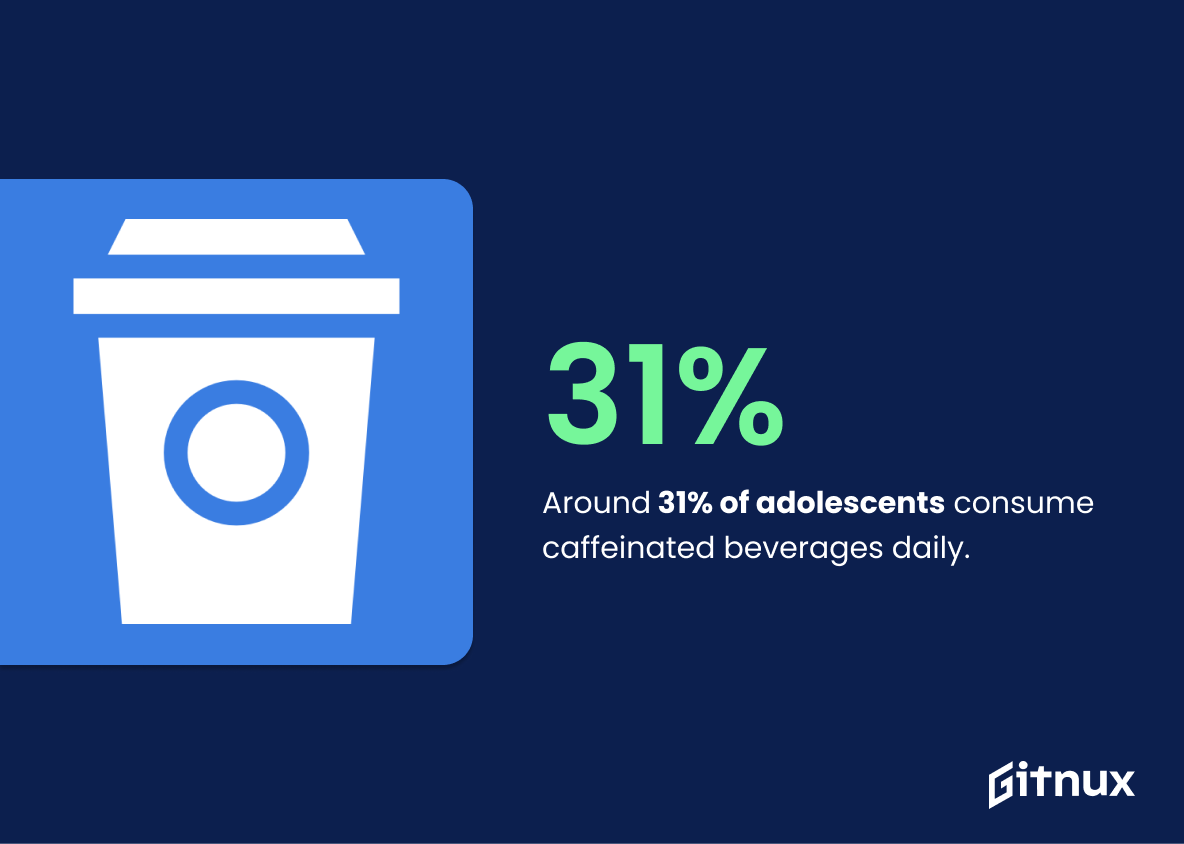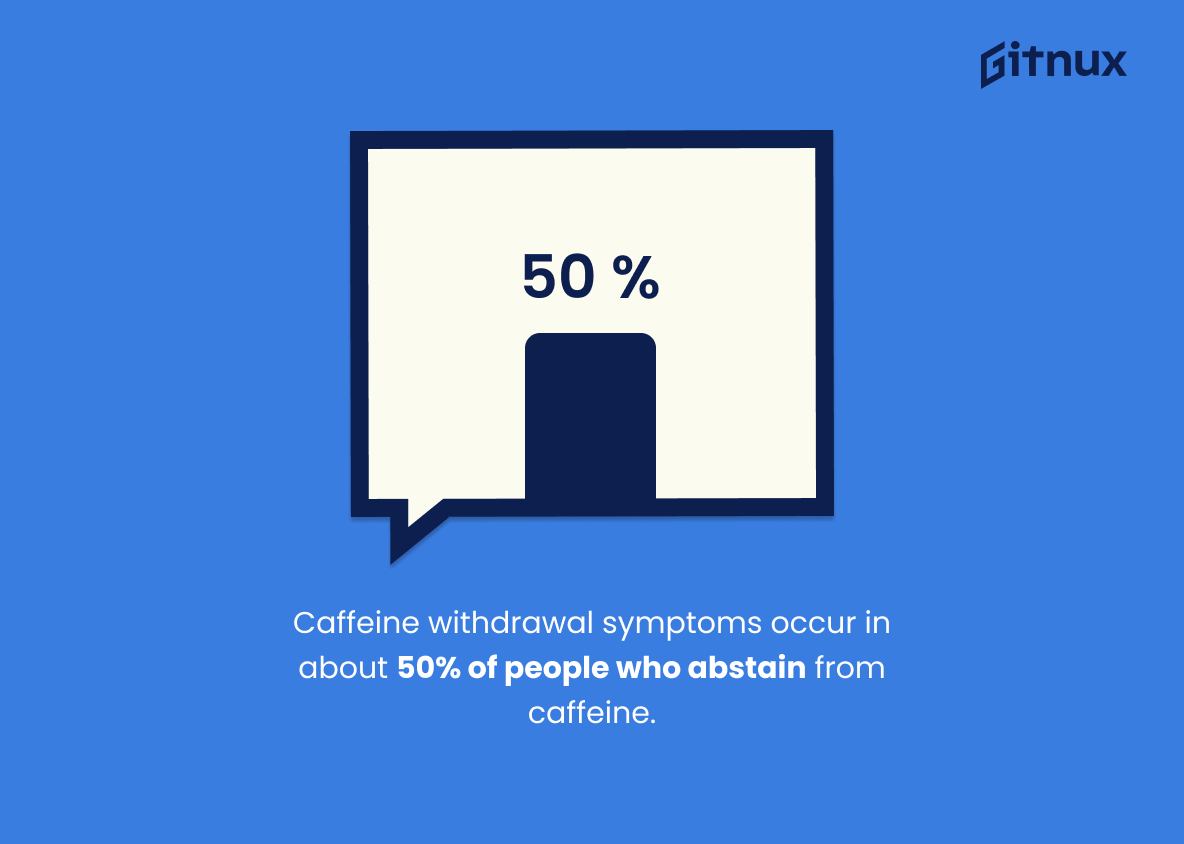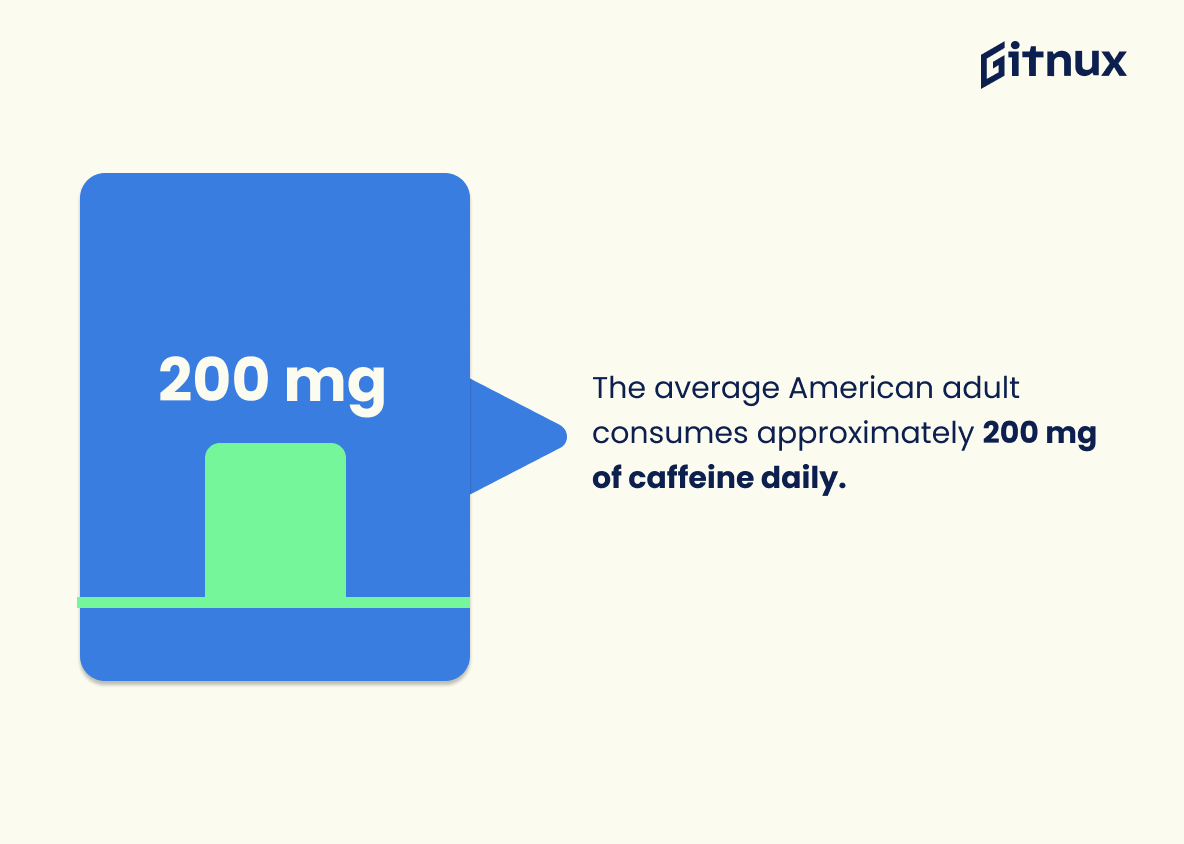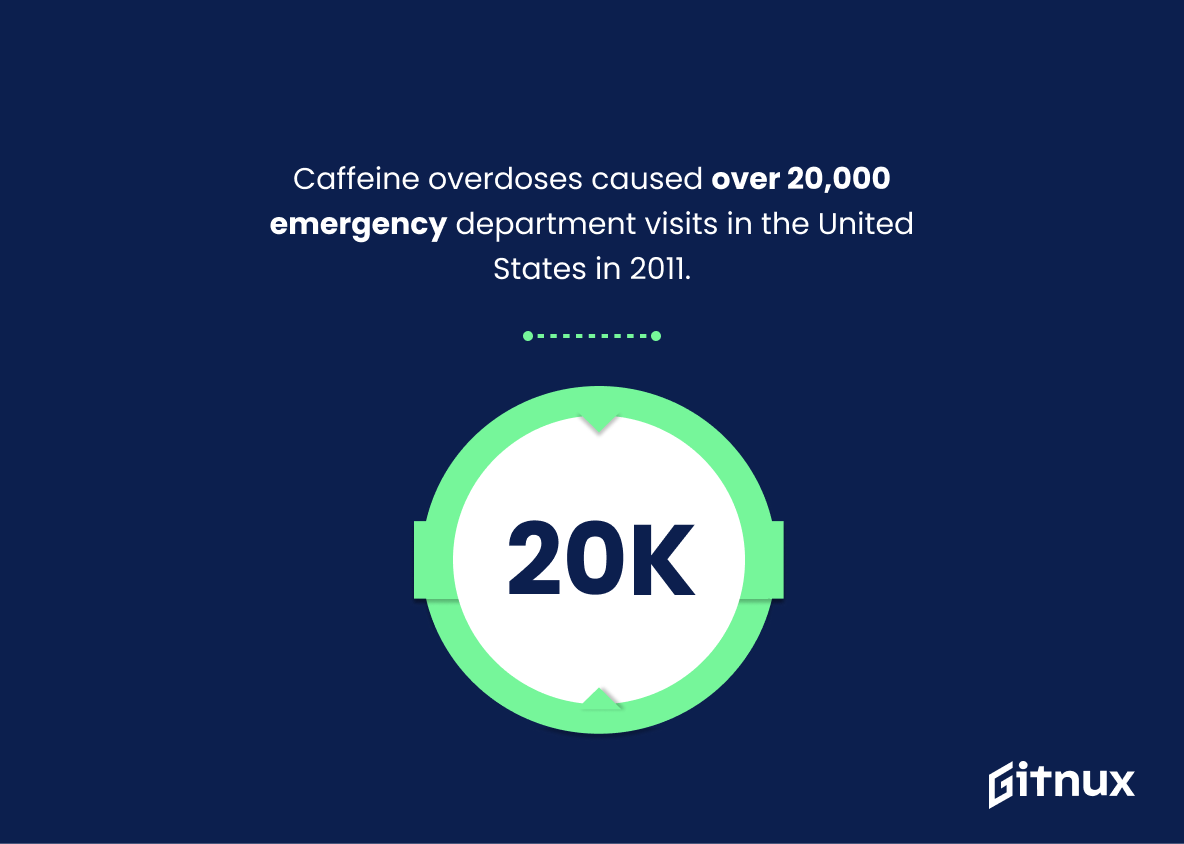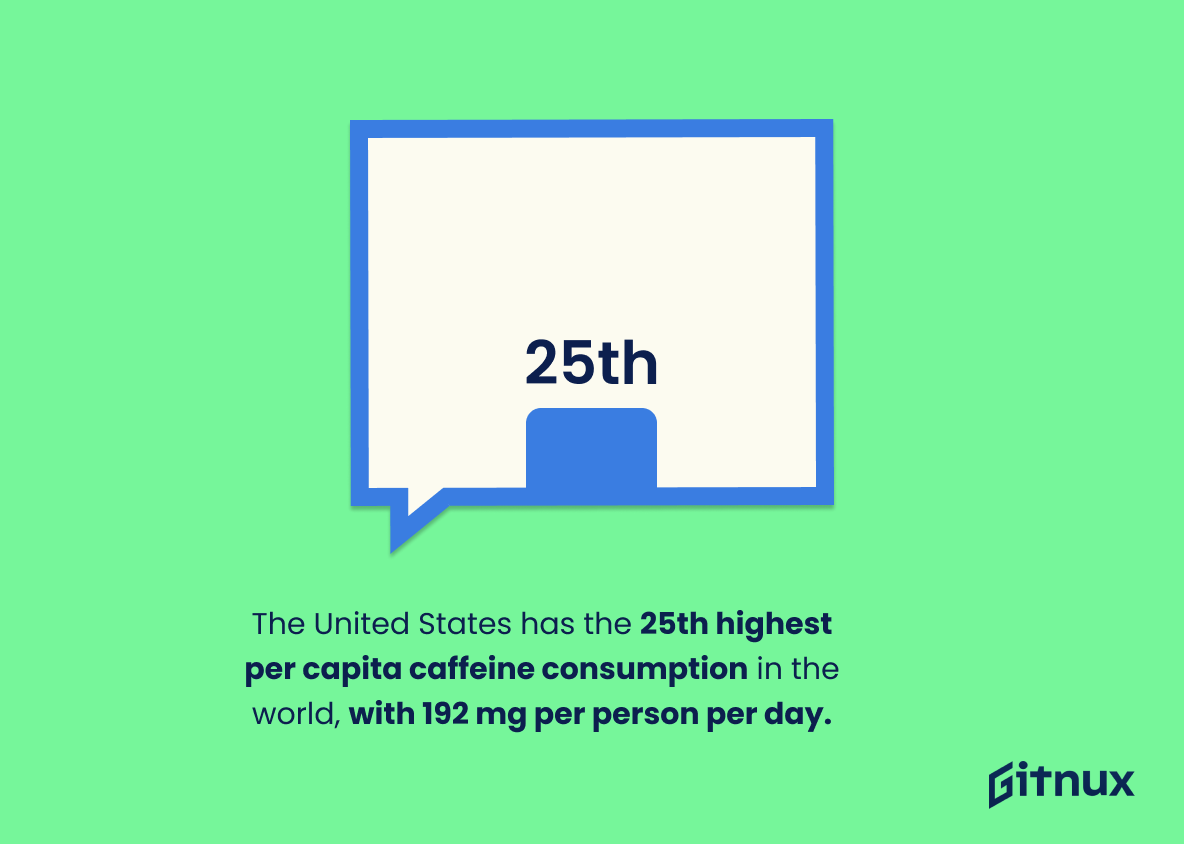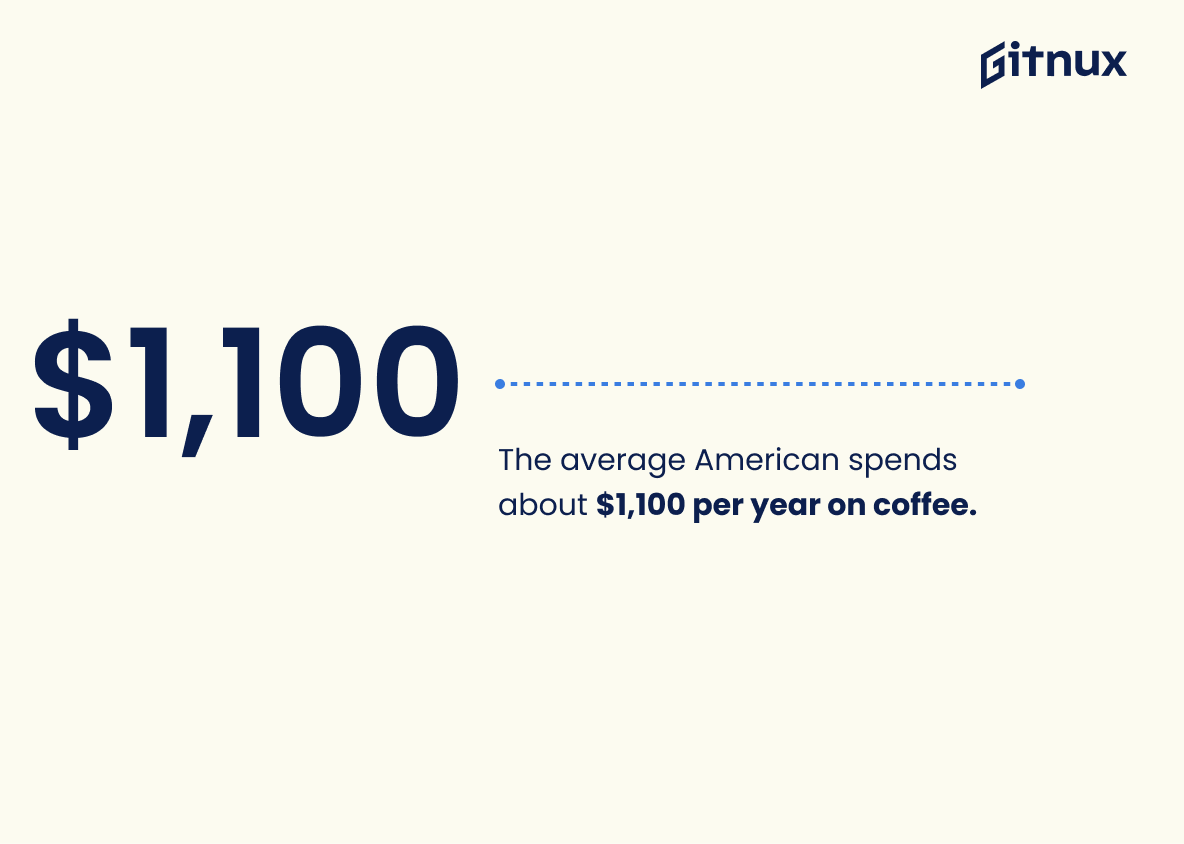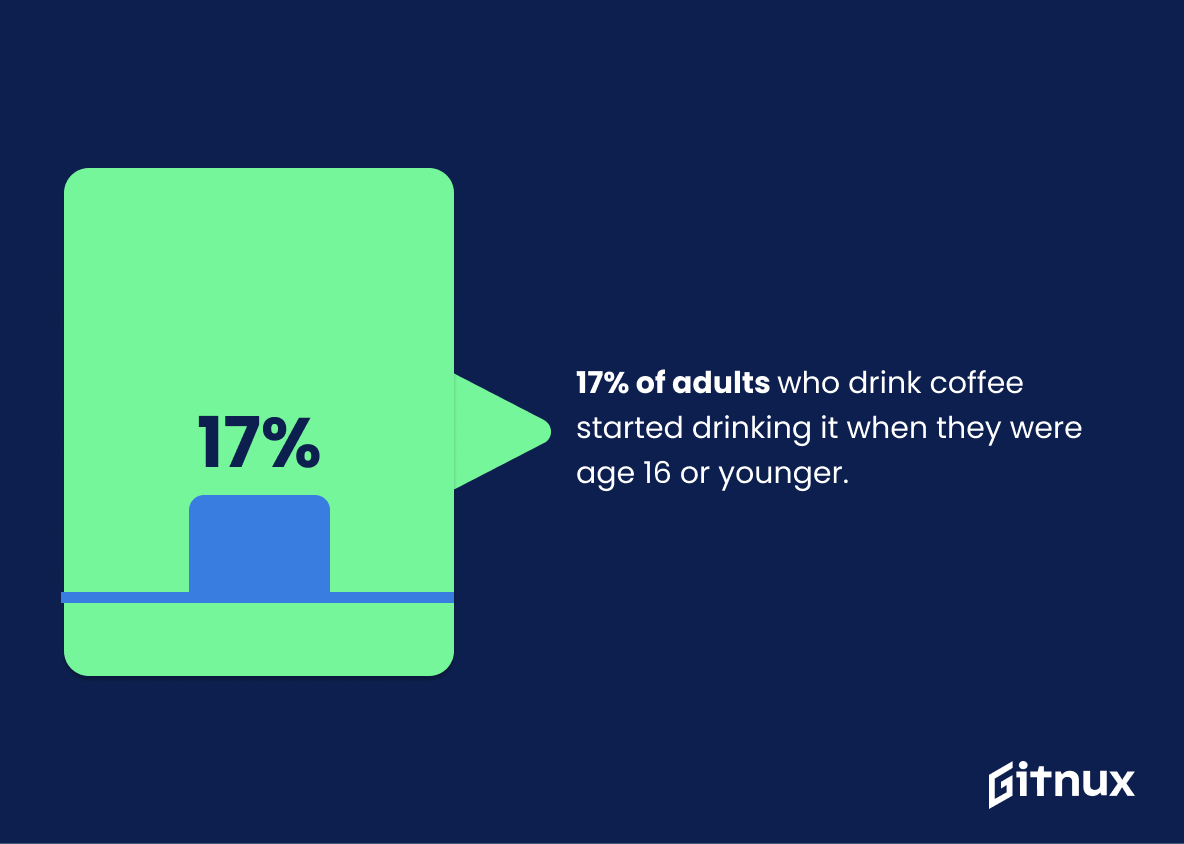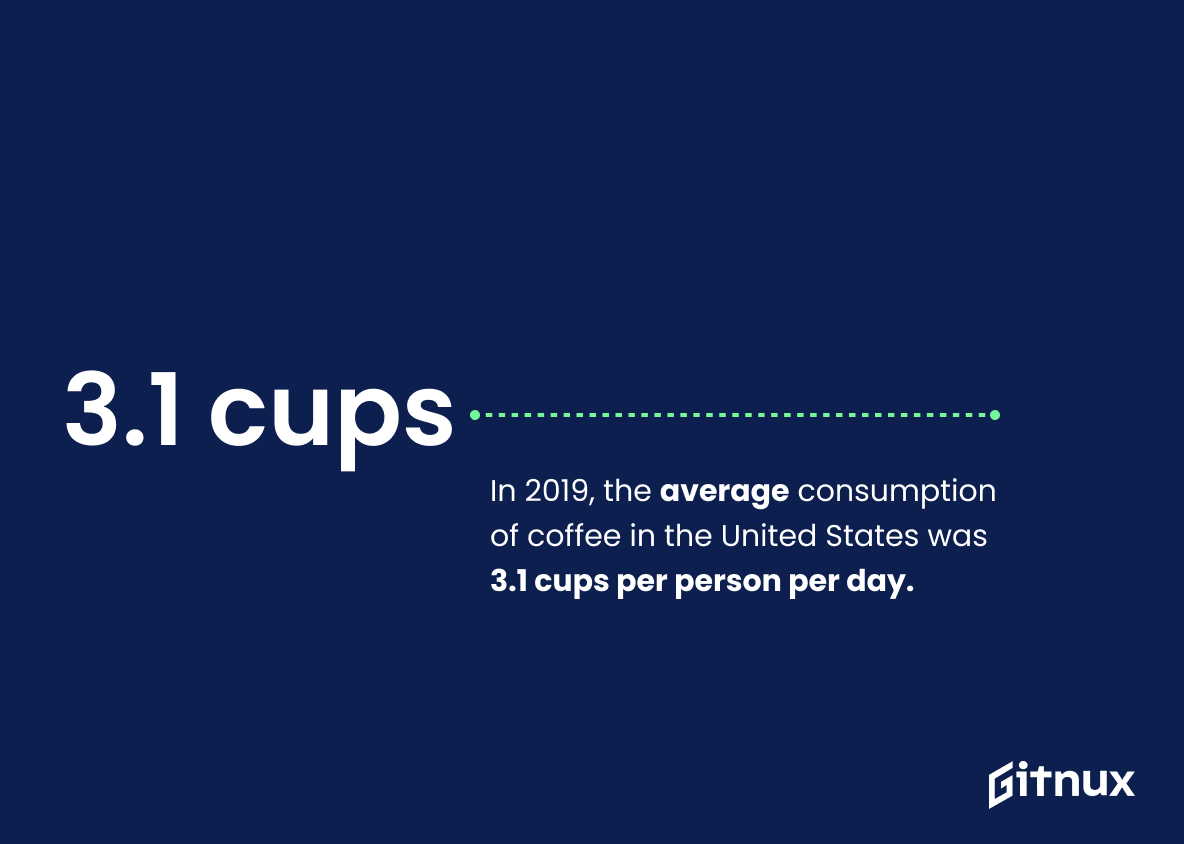Caffeine addiction is a growing problem in the United States and around the world. According to recent statistics, approximately 80% of adults in the United States consume caffeine daily, with 70.5% drinking at least one cup per day. Adolescents are also consuming caffeinated beverages on a regular basis – 31% drink them daily – while 50% of people who abstain from caffeine experience withdrawal symptoms. The global market for caffeinated beverages reached $202.63 billion in 2018, and Americans spend an average of $1,100 annually on coffee alone. In this blog post we will explore these facts as well as other interesting statistics about caffeine consumption and addiction worldwide.
Caffeine Addiction Statistics Overview
Around 31% of adolescents consume caffeinated beverages daily.
This statistic is a telling indication of the prevalence of caffeine addiction among adolescents. It shows that a significant portion of young people are consuming caffeinated beverages on a daily basis, which could be a sign of an unhealthy reliance on the stimulant. This statistic is an important piece of the puzzle when it comes to understanding the scope of caffeine addiction in adolescents.
Caffeine withdrawal symptoms occur in about 50% of people who abstain from caffeine.
This statistic is a powerful reminder of the prevalence of caffeine addiction. It highlights the fact that a significant portion of the population is affected by the physical and psychological effects of abstaining from caffeine. This statistic is an important piece of evidence that should be taken into consideration when discussing the prevalence of caffeine addiction and the potential risks associated with it.
The global market for caffeinated beverages reached $202.63 billion in 2018.
This statistic is a testament to the immense popularity of caffeinated beverages, highlighting the sheer size of the market and the prevalence of caffeine consumption. It serves as a reminder of the potential for addiction to caffeine, as the sheer number of people consuming these beverages is staggering.
The average American adult consumes approximately 200 mg of caffeine daily.
This statistic serves as a stark reminder of the prevalence of caffeine consumption in the United States. It highlights the fact that caffeine has become an integral part of the daily lives of many Americans, and that it is not just a casual indulgence. It is a habit that has become deeply ingrained in our culture, and one that can have serious consequences if not managed properly.
Caffeine overdoses caused over 20,000 emergency department visits in the United States in 2011.
This statistic serves as a stark reminder of the potential dangers of caffeine addiction. It highlights the fact that caffeine overdoses can have serious consequences, and that it is important to be aware of the risks associated with excessive caffeine consumption. It is a powerful reminder that caffeine addiction should not be taken lightly, and that it is important to be mindful of how much caffeine we are consuming.
64% of American adults consumed coffee daily in 2018.
This statistic is a key indicator of the prevalence of caffeine addiction in the United States. It shows that a large majority of American adults are consuming coffee on a daily basis, suggesting that caffeine addiction is a widespread issue. This statistic is an important piece of evidence to consider when discussing the prevalence of caffeine addiction in the United States.
The United States has the 25th highest per capita caffeine consumption in the world, with 192 mg per person per day.
This statistic is a telling indication of the prevalence of caffeine consumption in the United States. It shows that the US is among the top countries in the world when it comes to caffeine consumption, and that the average person in the US consumes a significant amount of caffeine each day. This is an important statistic to consider when discussing the potential risks of caffeine addiction and its effects on the population.
The average American spends about $1,100 per year on coffee.
This statistic serves as a stark reminder of the prevalence of caffeine addiction in the United States. It highlights the fact that Americans are spending a significant amount of money on coffee each year, indicating that caffeine addiction is a widespread problem.
17% of adults who drink coffee started drinking it when they were age 16 or younger.
This statistic is a telling indication of the prevalence of caffeine addiction in young adults. It suggests that a significant portion of adults have been consuming coffee since they were teenagers, indicating that caffeine addiction can start at a young age. This is an important statistic to consider when discussing the potential risks of caffeine addiction.
In 2020, the European coffee market was valued at around $29.12 billion.
This statistic is a testament to the immense popularity of coffee in Europe, highlighting the prevalence of caffeine addiction in the region. It serves as a reminder of the need to be aware of the potential risks of over-consumption of coffee and other caffeinated beverages.
Over 50% of young adults (18-24 years old) consume energy drinks regularly.
This statistic is a stark reminder of the prevalence of energy drink consumption among young adults. It highlights the need for greater awareness of the potential risks associated with caffeine addiction, particularly among this age group.
The average worldwide daily caffeine consumption is approximately 70 mg per person.
This statistic serves as a stark reminder of the prevalence of caffeine consumption in our society. It highlights the fact that, on a global scale, caffeine is a widely used substance, and that it is important to be aware of the potential risks associated with its overuse. This statistic is especially pertinent in the context of a blog post about Caffeine Addiction Statistics, as it serves to emphasize the need for further research and education on the subject.
In 2019, the average consumption of coffee in the United States was 3.1 cups per person per day.
This statistic is a telling indication of the prevalence of caffeine addiction in the United States. It shows that the average American consumes a significant amount of coffee each day, suggesting that many people are relying on caffeine to get through their day. This statistic is an important piece of evidence in understanding the scope of caffeine addiction in the United States.
Conclusion
Based on the statistics presented, it is clear that caffeine consumption in the United States and around the world is widespread. Approximately 80% of adults in America consume some form of caffeine daily, with coffee being by far the most popular choice at 54%. Additionally, 70.5% of American coffee drinkers drink at least one cup per day and 31% of adolescents also consume caffeinated beverages regularly. Caffeine withdrawal symptoms occur in about 50% who abstain from its use while energy drinks are becoming increasingly popular among young adults (18-24 years old). The global market for caffeinated beverages was valued at $202 billion dollars in 2018 and Americans spend an average of $1,100 a year on their favorite brews. It appears that despite potential risks associated with excessive intake such as emergency department visits due to overdoses or adverse effects during pregnancy, people continue to enjoy their morning cups o’ joe.
References
0. – https://www.statista.com
1. – https://www.samhsa.gov
2. – https://www.worldatlas.com
3. – https://www.grandviewresearch.com
4. – https://www.americanaddictioncenters.org
5. – https://www.news.gallup.com
6. – https://www.businessinsider.com
7. – https://www.researchgate.net
8. – https://www.nutrition.gov
9. – https://www.caffeineinformer.com
10. – https://www.ncbi.nlm.nih.gov
11. – https://www.mordorintelligence.com
